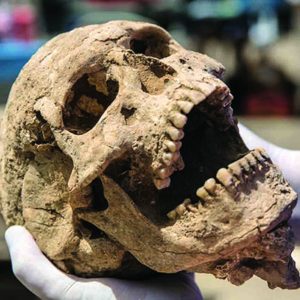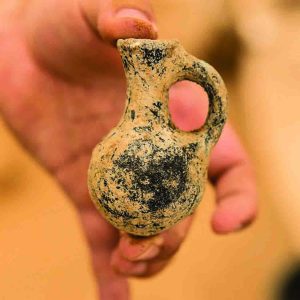×


We have detected your country as:
Please click here to go to the USA website or select another country from the dropdown list.
by: Edgar Asher, Ashernet
 The Leon Levy expedition in Ashkelon reported the first Philistine cemetery ever discovered anywhere in the world. Archaeologists and scholars have long searched for the origin of the Philistines, and the discovery of the cemetery is poised to offer the key to this mystery. Findings from the cemetery, dated to the 11th–8th centuries BC, may well support the claim that the Philistines were migrants to the shores of ancient Israel who arrived from the west around the 12th century BC.
The Leon Levy expedition in Ashkelon reported the first Philistine cemetery ever discovered anywhere in the world. Archaeologists and scholars have long searched for the origin of the Philistines, and the discovery of the cemetery is poised to offer the key to this mystery. Findings from the cemetery, dated to the 11th–8th centuries BC, may well support the claim that the Philistines were migrants to the shores of ancient Israel who arrived from the west around the 12th century BC.
The Philistines were characterized in the Bible as the archenemy of ancient Israel. The most famous Philistine was Goliath, the formidable fighter slain by David. The Philistines’ legacy lives on in the name ‘Palestine;’ the name the Romans gave to the region in the 2nd century and used by Palestinians today.
Excavations at Ashdod, Ekron, Ashkelon and Gath (Tell es-Safi) have demonstrated just how culturally distinct the Philistines were from the Israelites of that period. Artifacts uncovered at the site, including ceramics, jewelry and weapons, as well as the bones themselves, may connect the Philistines to related populations across the Mediterranean. Bone samples taken from the site are currently undergoing three types of testing—DNA, radiocarbon and biological distance studies—in order to help ascertain the secret of their origins.
 The Philistines ruled this area of the eastern Mediterranean from the 12th century BC onwards. Little is known about them, although they have since become a byword for people who are uncouth and uncultured. To help refute this caricature, archaeologists noted that some of the 150–200 Philistines were buried with perfumed oil, bracelets and earrings.
The Philistines ruled this area of the eastern Mediterranean from the 12th century BC onwards. Little is known about them, although they have since become a byword for people who are uncouth and uncultured. To help refute this caricature, archaeologists noted that some of the 150–200 Philistines were buried with perfumed oil, bracelets and earrings.
Photo Credit: Ashernet/IAA
All logos and trademarks in this site are property of their respective owner. All other materials are property of Bridges for Peace. Copyright © 2025.
Website Site Design by J-Town Internet Services Ltd. - Based in Jerusalem and Serving the World.